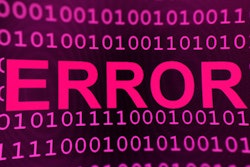
A media article published on 12 September has opened up a lively discussion about how and why thousands of test results were allegedly never followed up at a hospital in Australia last year. It is claimed this omission led to the death of a baby girl, missed broken bones, and the prescription of wrong medication.
According to the report posted by the Sydney Morning Herald (SMH), a doctor's discovery of the unchecked results at Dubbo Base Hospital first came to light in November 2019, only months after a New South Wales (NSW) Health investigation concluded a systemic failing at the hospital contributed to an infant's death. When the doctor tried to raise the alarm after discovering the problem, he was accused of being "unsupportive" of colleagues and dismissed, the SMH reported.
"During that week I had personally gone through perhaps 2,000 unchecked results. Unfortunately we are all aware of what can happen when results are not followed up," he wrote in an email that was sent to hospital management and leaked to the SMH. "This is an absolutely extraordinary number."
The doctor appealed against his termination to the NSW Ministry of Health and his version of events was laid out in legal documents leaked to the SMH by a third party. It's understood the appeal was successful and the doctor was cleared of wrongdoing. The doctor declined to comment when contacted and the SMH has chosen not to name him without his consent.
Death of baby girl
The episode dates back to early 2019, when an unwell baby girl presented to the emergency department, according to legal documents quoted in the SMH article. An x-ray showed she had a type of suspicious fracture seen nearly exclusively in babies who had been shaken, and which requires that the infant not be sent home while an urgent referral to child protection services is made. However, the treating doctor did not check the x-ray and the child was discharged without follow up.
"As a consequence, the opportunity to investigate the reason for the nonaccidental fracture was missed and the child subsequently died," the documents stated.
The SMH claims it has established the identity of the 11-month-old Aboriginal girl and her death is under investigation by NSW Police's child abuse and sex crimes squad.
An NSW Health investigation, known as a root cause analysis, concluded that systemic failings at the hospital were to blame for the unchecked x-ray, according to the legal documents cited by the SMH. In a letter dated August 2019, the hospital was ordered to address the problems.
A spokeswoman for the Western NSW Local Health district said there was "no doubt that the health system failed [the baby]," and blamed a "gap in the electronic medical record system process" that meant the x-ray was not reviewed in a timely manner and the fracture was not detected when it was reviewed.
According to the SMH, the spokeswoman said interim measures were immediately put in place and all of the investigation's recommendations had since been implemented, including a daily review of results by a senior consultant and the escalation of any abnormal results from the radiologist. "These actions mean that all reports and diagnostic results are reviewed and actioned daily," she said.
However, three months after the NSW Health investigation, the doctor became concerned test results were still not being checked by registrars, locums, general practitioners, consultants, and junior medical officers.
One trainee, who asked not to be named, told the SMH she spent three weeks chasing her own MRI results after presenting to Dubbo Base Hospital with numbness down one side. When she finally got hold of the results after "numerous requests," she discovered she had suffered a stroke.
Heavy reliance on teleradiology
The Dubbo Base Hospital is the feeder hospital for much of western NSW, and it is located in a relatively rural area around 400 km north-west of Sydney. Nearly 15% of the town's 40,000 inhabitants are Aboriginal, the 2016 census found.
"Some rural hospitals do not have any permanent radiologists," a source who wished to remain anonymous told AuntMinnieEurope.com on 14 September. "A lot of out-of-hours radiology is provided by teleradiologists based hundreds, or even thousands, of miles away. There is no connection between radiologist and hospital and piece-work payment can encourage high throughput."
Many rural hospital radiology departments are run by corporate groups, and it is common to have a teleradiology firm do the reporting, the observer continued.
Also, Australian base hospitals -- the local equivalent of regional general hospitals in Europe -- are heavily reliant on international medical graduates. Many of these graduates start off in posts declared to be in workforce shortage areas, which permits the employment of overseas doctors, according to the source.
"These doctors may not be trained to the same standard as local graduates and are permitted to work on the basis that they are supervised and working towards gaining recognition of being equivalent to locally-trained standards. Supervision can be variable in reality," noted the source, adding that some international graduates are excellent while others just do not have the training, even though they do their best. "Politicians want 'doctors in rural locations' and skills and training may not be considered as important as a body on the ground in political terms. No one wants to tackle the maldistribution of doctors in Australia."
Additionally, the exponential increase in testing means there are so many results to check that they may be forgotten or not checked. Also, because almost all exams are normal, there can be a presumption that everything will be normal, the expert said.
Problem patients
A second source pointed out that the public health care system in Australia is facing big issues.
"Public hospitals are swamped with all kinds of 'problem patients.' Very frequently, the problems are of a social or societal nature (drug abuse, poverty, aggression, …). But very often, in the hospitals, these social issues tend to be medicalized, which leads to overburdening of the public health care system," the person told AuntMinnieEurope.com.
"This is, of course, not an excuse for what happened, but it kind of explains the situation in many, especially small, public hospitals which are struggling to keep afloat," the source added.



















